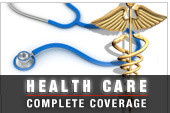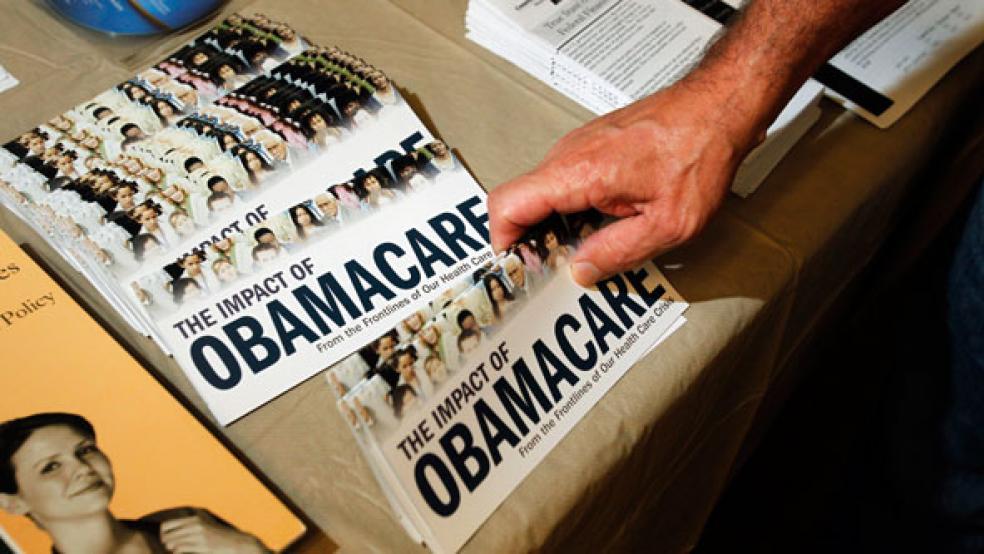Health care reform in the coming year will go on a kind of shakedown cruise to test the seaworthiness of America's evolving health care system as it becomes more cost-conscious and quality-focused under the Affordable Care Act.

In 2012, the health insurance law, also known as Obamacare, linked Medicare payments to the quality rather than quantity of care, started penalizing health insurers that charge too much in administrative fees and executive bonuses, and began rewarding good doctors who save Medicare money.
RELATED: Medicare May Be the Silent Killer in Budget Battles
Ahead in 2013, the law will attempt to strengthen America's health care safety net by increasing physician pay and expanding preventive care under Medicaid; bolstering the Children's Health Insurance Program, or CHIP; and launching more streamlined Medicare billing. State insurance exchanges to promote health plan comparison-shopping also face federal certification as they prepare for a scheduled opening in 2014.
Dr. Jeff Cain, president of the American Academy of Family Physicians, says the continued emphasis on primary and preventive care is essential to effective reform. "It's not a news flash that healthy people are cheaper to take care of than people who have diseases. One way we know we can cut costs and still maintain good quality is to have better primary care."
Medicaid Pay Raise for Family Doctors
Effective: Jan. 1, 2013
Currently, primary care doctors typically receive less for treating low-income Americans on Medicaid than for treating seniors covered by Medicare, even though both are federal-state programs. But beginning in January, state Medicaid programs will be required to pay at or above the Medicare rates, with the additional money coming solely from the federal government.
The timing of this pay raise is no accident, says Dr. Ron Greeno, public policy committee chair for the Society of Hospital Medicine. "One thing the Affordable Care Act did was provide coverage for about 32 million patients that weren't covered before, and about half of those are eligible for Medicaid," he says. "They're trying to find primary care physicians who are willing to take more Medicaid patients."
In fact, without this and other health care reforms designed to strengthen primary care, America could face a shortage of 21,000 primary care physicians by 2015. "The average family doctor sees eight patients a week on either a discounted or free basis," which includes Medicaid patients, says Cain. "It's important that family doctors be able to have a financially viable practice and remain independent."
Improving Medicaid Preventive Care
Effective: Jan. 1, 2013
Health care reform's unofficial motto might be that old saw about an ounce of prevention being worth a pound of cure. Chronic diseases, such as heart disease, cancer and diabetes, account for 7 out of 10 U.S. deaths and 75 percent of national spending on health care. To bend that costly curve, the Affordable Care Act invests an unprecedented $15 billion over 10 years to catch and manage diseases early.
In 2013, Obamacare picks up the tab for state Medicaid programs that choose to offer preventive services at little or no cost, following in the footsteps of health care reform's earlier extensions of "free" preventive screenings, vaccinations and services across Medicare and private insurance plans.
"A severe disease has two consequences: It's hard on people, and hard on our health care system," says Cain. "Someone who has untreated diabetes is more likely to have blindness, an amputation or heart disease than someone who had good quality screening to prevent those long-term consequences."
Exploring 'Bundled' Payments in Medicare
Effective: By Jan. 1, 2013
Just as a party is more successful if everyone mingles, Medicare, and eventually health care in general, can provide better care at a lower cost if doctors, hospitals and caregivers work together for the well-being of the patient.
Health care reform started to break the ice and bring doctors, hospitals and health care providers together in 2012 by rewarding accountable care organizations that offer more coordinated care. In the new year, the Affordable Care Act addresses Medicare's inefficient pay-per-service system, in which a simple surgery can result in dozens of separate bills from various care providers. A new national pilot program will pay a flat rate to cover all care provided during a medical episode.
"It's a way to encourage physicians who are not in an accountable care organization to help improve care in a cost-effective way," says Greeno. That can be good for the health care system as a whole. Deborah Chollet, a senior fellow at Mathematica Policy Research in Washington, D.C., notes that Medicare billing reforms typically become standard procedure in the private market, too. That happened with a Medicare switch in the early 1980s that brought about more uniform charges for each type of diagnosis.
Chipping in More for CHIP
Effective: Oct. 1, 2013
Established in 1997 and reauthorized by Congress in 2009, the Children's Health Insurance Program, or CHIP, provides affordable health coverage for nearly 8 million kids from low-income families that make too much to qualify for Medicaid but not enough to afford private health insurance. Health care reform extends federal CHIP funding to states through Oct. 1, 2015.
"Kids are one of the most vulnerable populations," says Cain. "Everyone can agree on the need to make certain children can grow up healthy. If they don't have insurance, they're less likely to get preventive care, more likely to wait until they're sicker to seek care and more likely to use expensive emergency rooms when they do."
RELATED: Health Costs Take Bigger Bite Out of Family Budget
Chollet says CHIP became even more important in June when the U.S. Supreme Court blocked the Affordable Care Act from forcing states to expand Medicaid. "Had that expansion survived, there are a lot of children who would have transitioned from CHIP to Medicaid. Now, either the children go to CHIP, or they become uninsured," she says. "Continuing the funding makes sense, financially. CHIP is a good program that has proven itself."
Certifying New State Insurance Exchanges
Effective: Ongoing
New state insurance exchanges, designed to offer consumers and small businesses one-stop online shopping for affordable private health plans, are supposed to launch starting in 2014. They're to be certified by the federal government during the coming year.
States face one of three options under the Affordable Care Act: Set up an exchange on their own, partner with the federal government, or simply sit back and let the feds run the exchange for them. States opposed to Obamacare were waiting to see if the president and his health care law would survive the election. Given the foot-dragging, fewer than 20 states were on track with their exchanges by mid-November.
Chollet, who's helping states plan their new marketplaces, says fireworks could ignite in some states between unyielding governors dead set against the health care reform exchanges and health insurance companies wanting in. "If the state is saying it wants to discourage and sabotage the exchange and the insurance carriers are saying they want to play in the exchange, it sets up an odd political dynamic," she says. "It may be the carriers who are going to tell the states, 'Enough already; this is going to move forward.'"
This article originally appeared in Bankrate .




